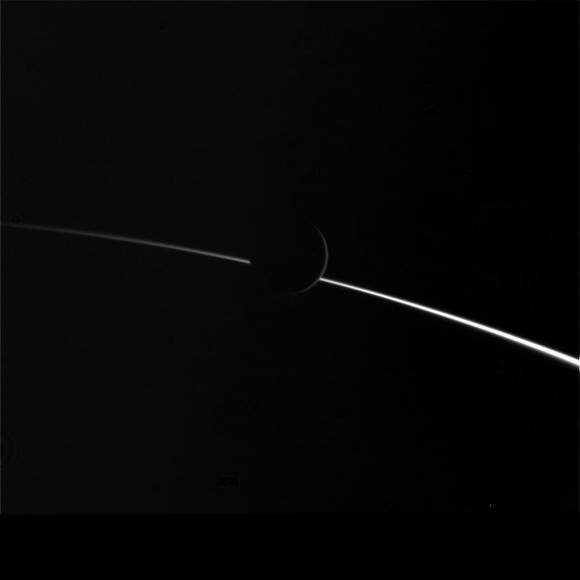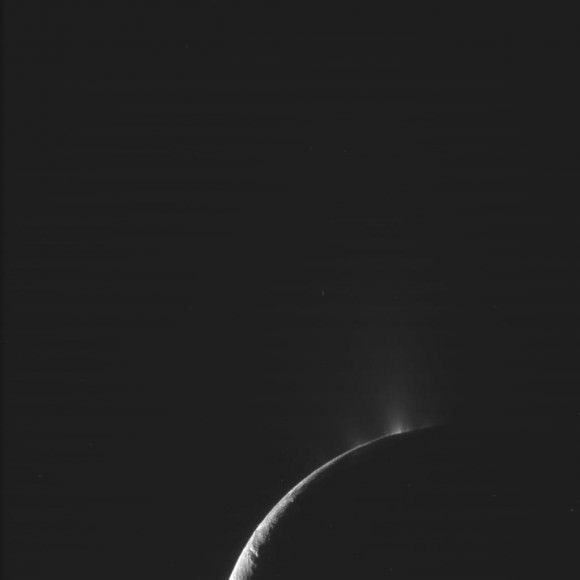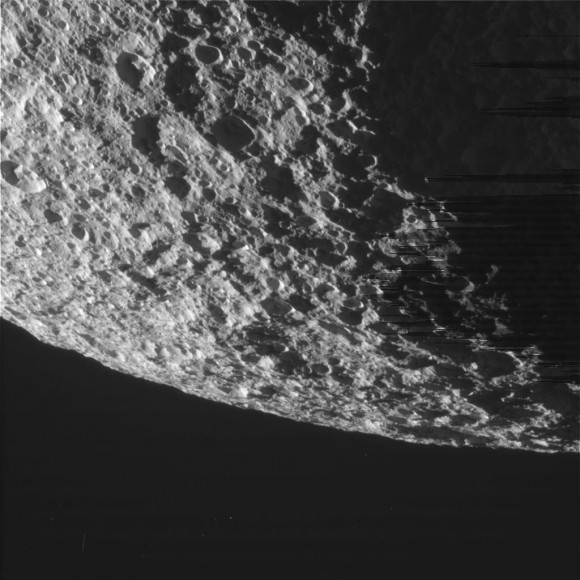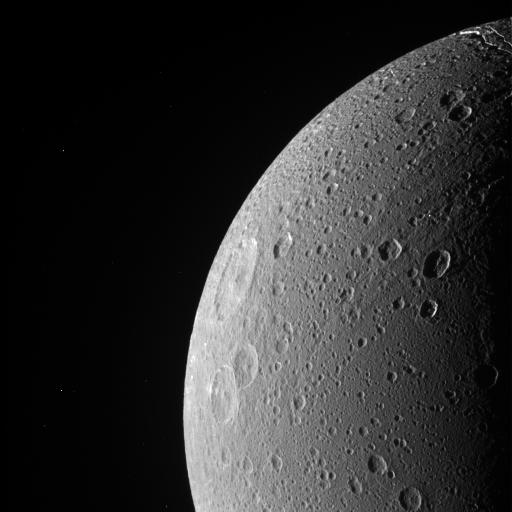[/caption]
Oh, wow! This is one of the best images yet from the Cassini spacecraft of the “tiger stripes” in the south polar region of Saturn’s moon Enceladus. Over the weekend, Cassini flew by Enceladus, and has sent back some incredible new images, such as the one above. The tiger stripes are actually giant fissures that spew jets of water vapor and organic particles hundreds of kilometers, or miles, out into space, and here, Cassini is staring right down into one of the fissures. See more great images of Enceladus below, plus images of the moons Dione and Tethys.

While the winter is darkening the moon’s southern hemisphere, Cassini has its own version of “night vision goggles” — the composite infrared spectrometer instrument – to track heat even when visible light is low. It will take time for scientists to assemble the data into temperature maps of the fissures.




See more amazing images from Cassini’s latest at the CICLOPS website.
Emily Lakdawalla at the Planetary Blog also has created some very cool movies from the flyby images.
Hat tip to Stu Atkinson


The white flecks in the Enceladus image are presumably image artefacts and not airborne ice blocks….
Perigee
Presumably, but not so funny.
Cassini: “Oh noes. Iz pot shot!”
The power source for this activity seems to be tidal interactions with Saturn.
LC
Ditto on that ‘Oh WOW!’
@Martinlewicki – Hmmm.. the Cassini page – http://saturn.jpl.nasa.gov/photos/raw/rawimagedetails/index.cfm?imageID=225085 – does not explain the white flecks in that image. Could be dust on one of the filters? That page DOES mention that the images are ‘RAW’ and unprocessed. Other images in that page, especially other ‘RAW’ images of the dark/light surface features show unprocessed pixels appearing squarish where those dark/light segments meet.
The write specks in the images, from the Cassini spacecraft, are due to thermal noise and hits from cosmic rays triggering the pixels in the CCD (camera) array, as mentioned here.
DAMN IT! That should be WHITE, not WRITE!
Funny I read it as white anyway, the brain sees what it wants to see. Anyway these are simply stunning shots, that Cassini spacecraft is worth its weight in gold, yes it probably cost more than that but you know what I mean.
Wow – stunning to say the least.
I don’t know the image resolution but the white spec may be an exposed clear ice face reflecting sunlight. The view through eruption is little foggy but you can see right through the entire column. So-called eruption is more like out gassing. Don’t you think?